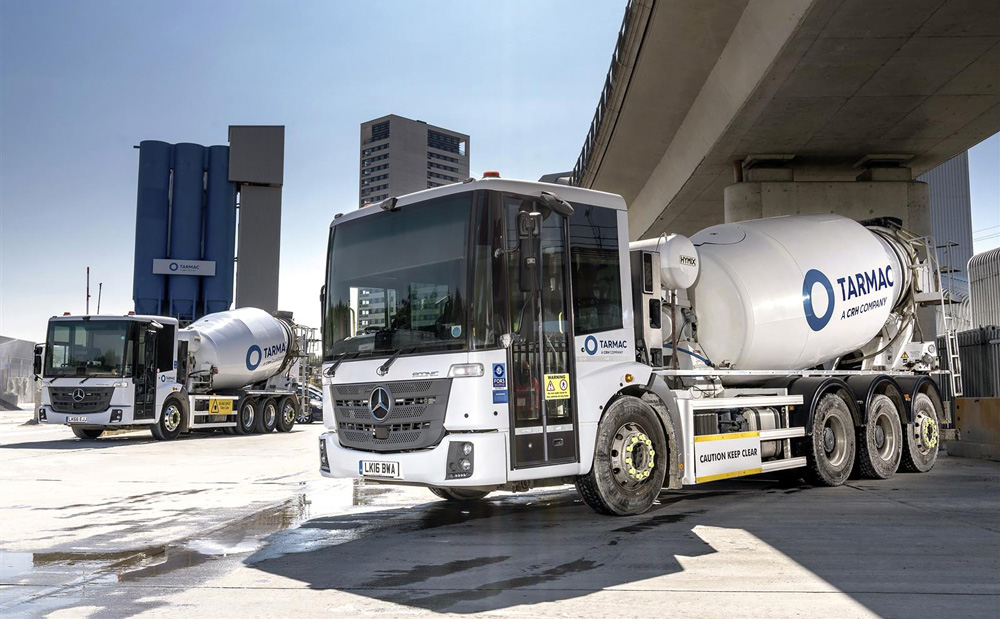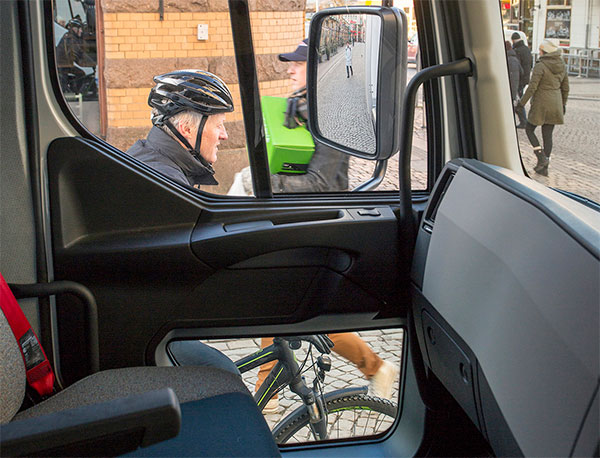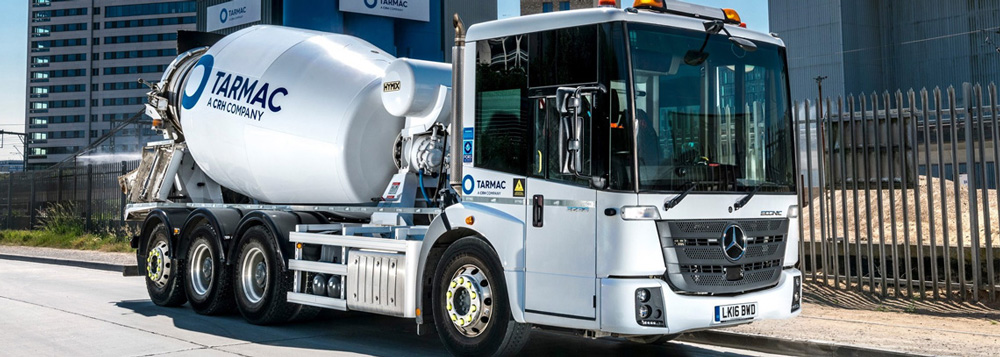
Tarmac has recently ordered 25 Mercedes-Benz Econics, which have been developed to allow better all-round vision from the driver’s seat
As part of the FORS Members’ Conference, the future of the Direct Vision Standard was presented. It’s a future that stretches way beyond door windows, reports John Challen
Just like FORS, the subject of direct vision has come a long way in 10 years. At the FORS Members’ conference, Alina Tuerk, delivery planning manager for freight at Transport for London (TfL) was keen to highlight the decade of achievements, but also explain what the future holds for the Direct Vision Standard (DVS).
“Ten years ago, the policy context of direct vision was around cycling and improvements to HGV safety had only just started to be discussed. At the same time, London had – and still has a problem – with HGVs having collisions with vulnerable road users,” said Tuerk, revealing that London had a greater problem than other urban areas in the UK, which has led to the Mayor of the city, Sadiq Khan, giving a mandate to act now. “Currently we are seeing that, until very recently, truck design hasn’t changed much in the past 50 years. Government policy has also changed over the past few years, most notably with the introduction of Vision Zero, which believes that no loss of life should be considered acceptable or inevitable,” revealed Tuerk. There is now a drive to eliminate death and serious injuries on London’s transport network by 2041 and the Vision Zero Action Plan outlines an evidence-led, comprehensive road danger reduction programme involving road conditions, infrastructure design and road user behaviour.
Tuerk stated that there is clear evidence for the benefits of direct vision and referenced research carried out by the University of Leeds and Arup that showed that using indirect vision, the driver has a slower response of 0.7 seconds compared to direct vision. “While this might sounds like a small amount of time, at a speed of 50mph it’s an extra stopping distance of nearly 5m. Even at 5mph, it’s an extra 1.5m.” The research also looked at simulated collisions that showed that indirect vision resulted in increased incidents of simulated pedestrian collisions by 23%.

In the future, vehicles must meet a direct vision star rating in order to enter London
DVS in detail
Direct vision splits into three sections: a measure, a rating and the application of the DVS. The measure looks at 3D volume of space that can be seen directly by the driver from the cab. In essence, said Tuerk, the greater the volume, the closer the person can be seen to the vehicle. The measure is then translated into a rating, based on a number of stars, from zero (worst performing vehicle) to five (best performing vehicle). To meet ‘one star’, at least the head and shoulders of 99 per cent of the European adult population must be seen within an ‘acceptable’ distance at the front and side. The ‘acceptable’ distance is set to where people become directly visible within the area covered by mirrors. The two, three-, four- and five-star rating boundaries are set by equally dividing the volume of space over and above the one star measurement to show relative direct vision performance.
“Finally, for the application of DVS, what we are planning for London is to implement the standard via an HGV safety permit scheme, which would apply to all HGVs over 12 tonnes 24/7,” revealed Tuerk. “We propose that the permit issuing begins in October 2019 and there will be one year for operators to comply before we start enforcing the scheme. We have set an ambitious but realistic star rating threshold whereby under the permit scheme all HGVs with zero stars would be banned unless they could prove they have a safe system.” She added that the idea of the development of a safe system came from the first consultation where TfL was asked to look at vehicle safety more comprehensively.
Until very recently, truck design hasn’t changed much in the past 50 years
It was argued that a potential drastic ban of vehicles needed a mitigation measure, until the market caught up.
“We are proposing a system that aligns with requirements of FORS Silver, which includes the Class 5 and 6 mirrors and side underrun protection – already requirements under the Safer Lorries Scheme,” said Tuerk. “This target includes blind spot cameras, close proximity sensors and audible alerts for vehicles turning left as well as vehicle signage. Essentially we are saying that if your vehicle is rated zero stars, but you are a FORS Silver or Gold accredited operator, you are likely to comply with the safe system requirements. But, at the same time, you don’t have to be a FORS member to qualify.
“There is a large team looking at obtaining permits, but the main points to bear in mind are that there won’t be a cost of getting a permit and that for zero to two-star rated vehicles the permit will be valid until 2024 and for three stars and above the permit is valid for 10 years,” outlined Tuerk. “We’ve consulted on the project twice and we are compiling the final proposal before a final consultation in January 2019. The outcomes will shape the final scheme going forward.
The future
Tuerk said that despite the changes surrounding direct vision, the policy context remained the same. “We are still focused on eliminating deaths and serious injuries on the road by 2041 but we are also proposing to strengthen the HGV permit scheme. In 2024 we are looking to increase the threshold where all zero to two-star HGVs will be banned unless they prove a ‘progressive safe system’.
More News from the Standard Magazine



